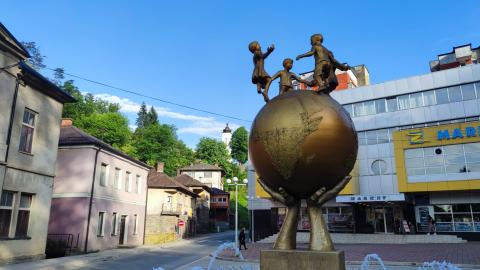In Depopulated Srebrenica, Shuttered Shops and Open-Hearted People

Driven by curiosity, we walked into the building the music was coming from, which is called The House of Good Tones. Hilda Djozic, office manager of the House, tells us later on that what we heard was a rehearsal by one of the youngest bands they have, and that the drummer was a seven-year-old girl.
"The House of Good Tones works with kids and youth from the Srebrenica and Bratunac districts, they have organised transport to come here, we provide them food and they choose the activity they want to attend," Djozic told BIRN.
The House aims to bring together children and young people, members of a community which was divided by the 1992-95 war in Bosnia and Herzegovina. Since 2010, thousands have participated in various music and language classes, and have performed all around Bosnia and Herzegovina and abroad.
"Some 300 to 400 hundred kids have been through our activities yearly. When they grow up, some of them stay with us even after high school and they help us organise various activities," Djozic added.
Two music professors practice with the youngest pupils at the House of Good Tones. Photo: The House of Good Tones.
Djozic herself was also a refugee after the July 1995 genocide of Bosniaks committed by Bosnian Serb forces, when more than 8,000 people were killed in the area around Srebrenica. In the 1991 census, the Srebrenica municipality had a population of some 36,000 people, but by 2013, it had lost 63 per cent of them, shrinking to 13,409.
The current population estimate is even lower, but as Bosnia has not had a census for more than a decade, the real number of local residents are unknown.
It took a long time for life to see a post-war resurgence in the area. Srebrenica attracts large numbers of...
- Log in to post comments
